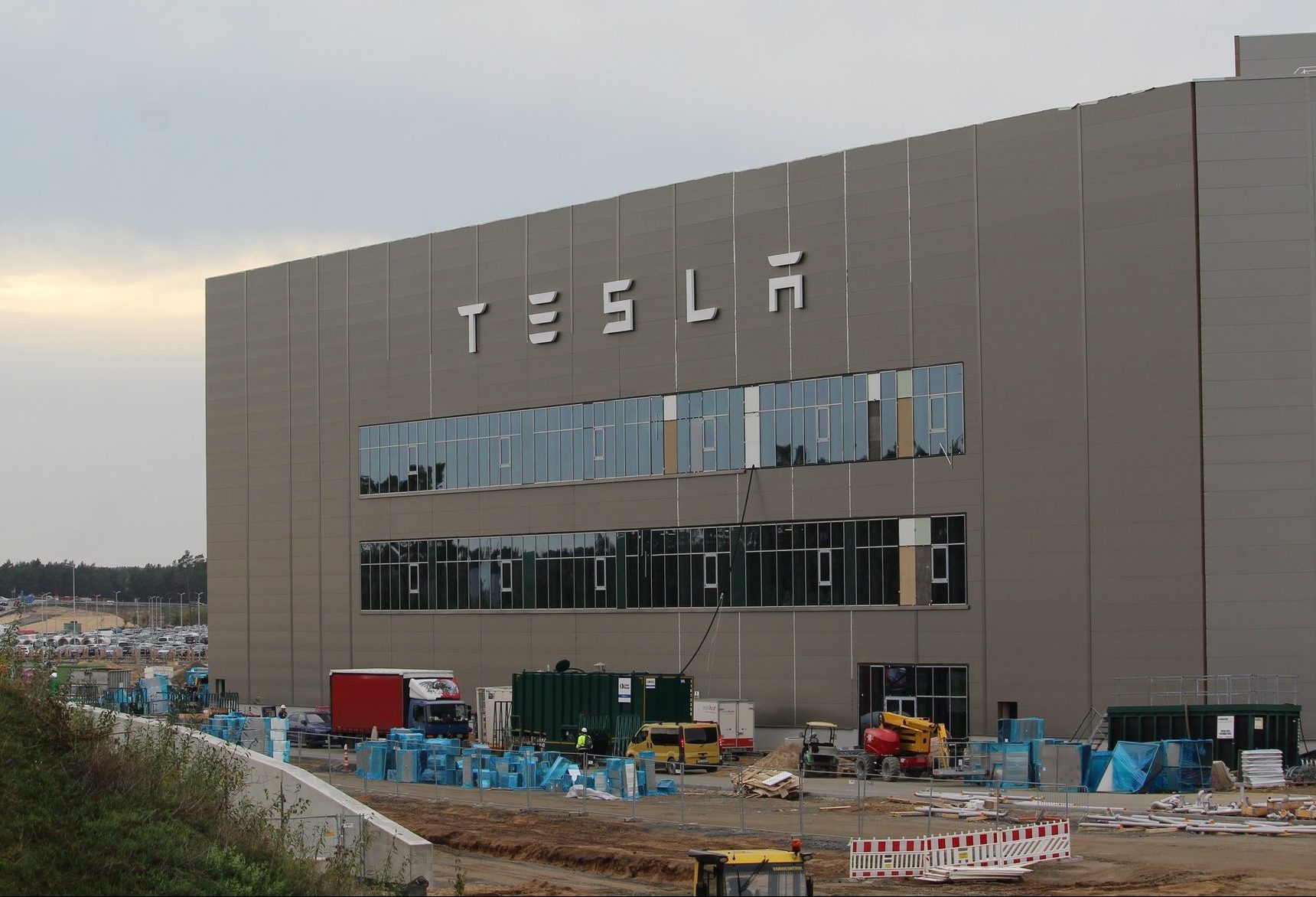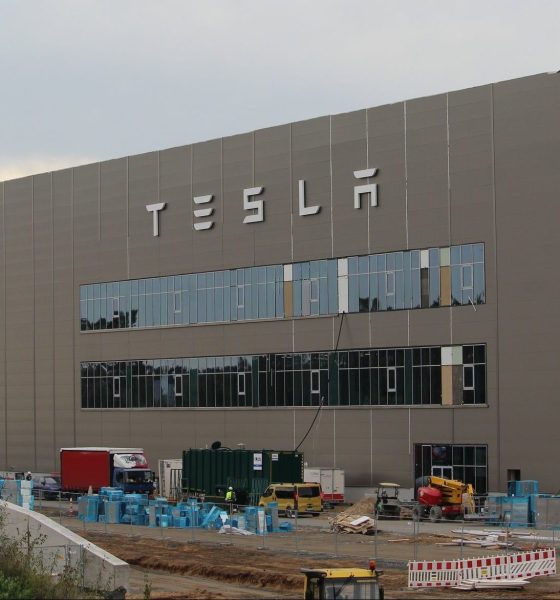

News
Anti-Tesla protesters swarm Giga Berlin-Brandenburg, injuries and arrests reported
Tensions flared on Friday as environmental activists attempted to breach the grounds of Tesla Giga Berlin-Brandenburg in Grünheide, Germany. The protest, which is reportedly being conducted as a form of opposition against the planned expansion of the facility, resulted in a confrontation with police, as well as several injuries and arrests.
The anti-Tesla group made some headway in their attempts to break into Giga Berlin-Brandenburg’s premises, particularly when they overcame wildlife fences and police barriers. Police spokesperson Maik Kettlitz informed rbb24 that the protesters were repelled by the police. Authorities were also on-site in Giga Berlin with water cannons and a clearing tank.
Rund 800 Aktivist:innen befinden sich auf dem Tesla Werksgelände!#disrupttelsa #stoptesla pic.twitter.com/pSzFdkNzxj— Disrupt (@disrupt__now) May 10, 2024
Injuries were reported on both sides, including one protestor and three police officers. Authorities have noted that several arrests have been made in connection with the anti-Tesla protests. Demonstrators have criticized the arrests as “repression.” They also claimed that there was “massive police violence.”
Die Ästhetik des Widerstands #stoptesla #disrupttesla pic.twitter.com/SQfXbwc0la— FaggotsForFuture ✊?✊ (@RealTadzioM) May 10, 2024
Anti-Tesla group Disrupt Alliance claimed that around 800 activists participated in the demonstration, and the protest size exceeded 1,000 people. Videos posted online showed large numbers of activists running towards Giga Berlin-Brandenburg, and photos posted by activists revealed that some Model Y crossovers had been vandalized by the demonstrators.
Aktivist:innen haben Tesla markiert.#disrupttesla pic.twitter.com/0QSzM5TRBG— Disrupt (@disrupt__now) May 10, 2024
Despite the demonstrators seemingly failing in their attempts to breach Giga Berlin-Brandenburg, the protests caused significant disruption to the area nonetheless. The nearby Freienbrink motorway exit and surrounding streets were closed, and rail service between Berlin and Frankfurt (Oder) was temporarily halted. Service reportedly resumed by mid-afternoon, however.
Auf dem Weg zur Tesla-Fabrik durchbricht der »blaue Block« auf einem Feld die Polizeisperren. #stoptesla #disrupttesla #tesla pic.twitter.com/GGNVvhnfi9— junge Welt (@jungewelt) May 10, 2024
Anti-Tesla groups have been calling for days of action against the electric vehicle maker, though it is no secret that efforts against the company are nothing new. Activists have been camped out in a forest near the factory since February, occupying tree houses in protest of the deforestation that Giga Berlin-Brandenburg’s expansion is expected to cause. The activists also argued that the region would be “sold out to Tesla.” “Our livelihoods are not for sale,” the group noted.
Was den Protest heute ausgezeichnet hat, ist wieder der Wille und der Mut entschlossen für Veränderung zu kämpfen.#DisruptTesla pic.twitter.com/IShr89nd5v— Disrupt (@disrupt__now) May 10, 2024
The protests weren’t limited to Grünheide. A separate demonstration targeting Tesla’s presence took place at the Mall of Berlin shopping center, where activists criticized the idea of electric cars being clean vehicles. Tesla, for its part, noted that the protests did not have a large impact on its operations, especially considering Giga Berlin-Brandenburg’s short-term vehicle production halt on Friday, which had been scheduled since January.
This is fake news.
Protesters did not manage to break through the fenceline. There are still 2 intact fence lines all around.
Note, this is “National Protest Week” in Germany, so there are a lot of protests for many different reasons.— Elon Musk (@elonmusk) May 10, 2024
Tesla CEO Elon Musk has posted a comment about the protests. As per Musk, Giga Berlin has not been breached by protesters, and he also noted that at this time, there are typically numerous protests in Germany. “Protesters did not manage to break through the fenceline. There are still 2 intact fence lines all around. Note, this is ‘National Protest Week’ in Germany, so there are a lot of protests for many different reasons,” Musk wrote.
Don’t hesitate to contact us with news tips. Just send a message to simon@teslarati.com to give us a heads up.

Elon Musk
Elon Musk and Tesla AI Director share insights after empty driver seat Robotaxi rides
The executives’ unoccupied tests hint at the rapid progress of Tesla’s unsupervised Robotaxi efforts.

Tesla CEO Elon Musk and AI Director Ashok Elluswamy celebrated Christmas Eve by sharing personal experiences with Robotaxi vehicles that had no safety monitor or occupant in the driver’s seat. Musk described the system’s “perfect driving” around Austin, while Elluswamy posted video from the back seat, calling it “an amazing experience.”
The executives’ unoccupied tests hint at the rapid progress of Tesla’s unsupervised Robotaxi efforts.
Elon and Ashok’s firsthand Robotaxi insights
Prior to Musk and the Tesla AI Director’s posts, sightings of unmanned Teslas navigating public roads were widely shared on social media. One such vehicle was spotted in Austin, Texas, which Elon Musk acknowleged by stating that “Testing is underway with no occupants in the car.”
Based on his Christmas Eve post, Musk seemed to have tested an unmanned Tesla himself. “A Tesla with no safety monitor in the car and me sitting in the passenger seat took me all around Austin on Sunday with perfect driving,” Musk wrote in his post.
Elluswamy responded with a 2-minute video showing himself in the rear of an unmanned Tesla. The video featured the vehicle’s empty front seats, as well as its smooth handling through real-world traffic. He captioned his video with the words, “It’s an amazing experience!”
Towards Unsupervised operations
During an xAI Hackathon earlier this month, Elon Musk mentioned that Tesla owed be removing Safety Monitors from its Robotaxis in Austin in just three weeks. “Unsupervised is pretty much solved at this point. So there will be Tesla Robotaxis operating in Austin with no one in them. Not even anyone in the passenger seat in about three weeks,” he said. Musk echoed similar estimates at the 2025 Annual Shareholder Meeting and the Q3 2025 earnings call.
Considering the insights that were posted Musk and Elluswamy, it does appear that Tesla is working hard towards operating its Robotaxis with no safety monitors. This is quite impressive considering that the service was launched just earlier this year.
Elon Musk
Starlink passes 9 million active customers just weeks after hitting 8 million
The milestone highlights the accelerating growth of Starlink, which has now been adding over 20,000 new users per day.

SpaceX’s Starlink satellite internet service has continued its rapid global expansion, surpassing 9 million active customers just weeks after crossing the 8 million mark.
The milestone highlights the accelerating growth of Starlink, which has now been adding over 20,000 new users per day.
9 million customers
In a post on X, SpaceX stated that Starlink now serves over 9 million active users across 155 countries, territories, and markets. The company reached 8 million customers in early November, meaning it added roughly 1 million subscribers in under seven weeks, or about 21,275 new users on average per day.
“Starlink is connecting more than 9M active customers with high-speed internet across 155 countries, territories, and many other markets,” Starlink wrote in a post on its official X account. SpaceX President Gwynne Shotwell also celebrated the milestone on X. “A huge thank you to all of our customers and congrats to the Starlink team for such an incredible product,” she wrote.
That growth rate reflects both rising demand for broadband in underserved regions and Starlink’s expanding satellite constellation, which now includes more than 9,000 low-Earth-orbit satellites designed to deliver high-speed, low-latency internet worldwide.
Starlink’s momentum
Starlink’s momentum has been building up. SpaceX reported 4.6 million Starlink customers in December 2024, followed by 7 million by August 2025, and 8 million customers in November. Independent data also suggests Starlink usage is rising sharply, with Cloudflare reporting that global web traffic from Starlink users more than doubled in 2025, as noted in an Insider report.
Starlink’s momentum is increasingly tied to SpaceX’s broader financial outlook. Elon Musk has said the satellite network is “by far” the company’s largest revenue driver, and reports suggest SpaceX may be positioning itself for an initial public offering as soon as next year, with valuations estimated as high as $1.5 trillion. Musk has also suggested in the past that Starlink could have its own IPO in the future.
News
NVIDIA Director of Robotics: Tesla FSD v14 is the first AI to pass the “Physical Turing Test”
After testing FSD v14, Fan stated that his experience with FSD felt magical at first, but it soon started to feel like a routine.

NVIDIA Director of Robotics Jim Fan has praised Tesla’s Full Self-Driving (Supervised) v14 as the first AI to pass what he described as a “Physical Turing Test.”
After testing FSD v14, Fan stated that his experience with FSD felt magical at first, but it soon started to feel like a routine. And just like smartphones today, removing it now would “actively hurt.”
Jim Fan’s hands-on FSD v14 impressions
Fan, a leading researcher in embodied AI who is currently solving Physical AI at NVIDIA and spearheading the company’s Project GR00T initiative, noted that he actually was late to the Tesla game. He was, however, one of the first to try out FSD v14.
“I was very late to own a Tesla but among the earliest to try out FSD v14. It’s perhaps the first time I experience an AI that passes the Physical Turing Test: after a long day at work, you press a button, lay back, and couldn’t tell if a neural net or a human drove you home,” Fan wrote in a post on X.
Fan added: “Despite knowing exactly how robot learning works, I still find it magical watching the steering wheel turn by itself. First it feels surreal, next it becomes routine. Then, like the smartphone, taking it away actively hurts. This is how humanity gets rewired and glued to god-like technologies.”
The Physical Turing Test
The original Turing Test was conceived by Alan Turing in 1950, and it was aimed at determining if a machine could exhibit behavior that is equivalent to or indistinguishable from a human. By focusing on text-based conversations, the original Turing Test set a high bar for natural language processing and machine learning.
This test has been passed by today’s large language models. However, the capability to converse in a humanlike manner is a completely different challenge from performing real-world problem-solving or physical interactions. Thus, Fan introduced the Physical Turing Test, which challenges AI systems to demonstrate intelligence through physical actions.
Based on Fan’s comments, Tesla has demonstrated these intelligent physical actions with FSD v14. Elon Musk agreed with the NVIDIA executive, stating in a post on X that with FSD v14, “you can sense the sentience maturing.” Musk also praised Tesla AI, calling it the best “real-world AI” today.








